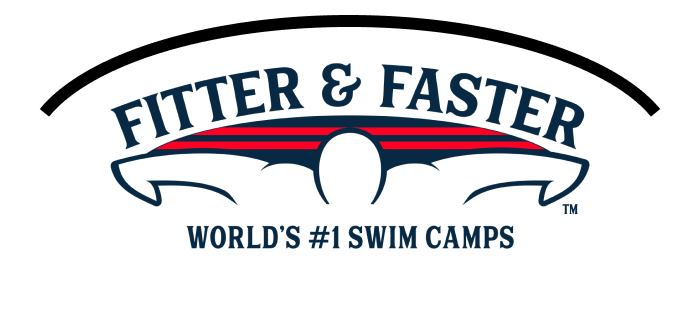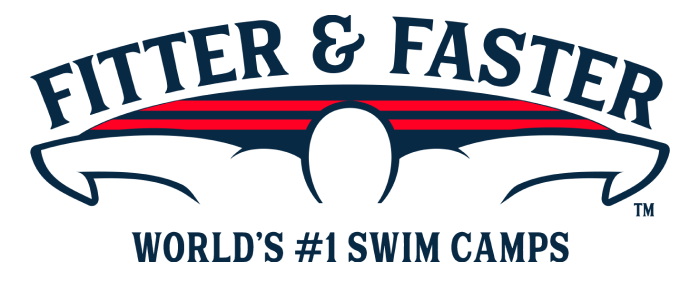Reno, Nevada Swim Camp Series (Ages 9 to 11)
Northwest Pool
2925 Apollo Way,
Reno,
NV 89503
- days
- hours
- minutes
- seconds
Introduction
Fitter & Faster is producing a series of swim camps for competitive swimmers ages 9 to 11 at Northwest Pool in Reno, Nevada during 2025! Click here for the swim camp page for ages 12 & over!
RENO, NV SWIM CAMP SERIES (Ages 9 to 11)
-> Fast Freestyle & Backstroke Technique Swim Camp (September 6 & 7, 2025)
-> Fast Starts, Turns, Underwaters & More Swim Camp (November 22 & 23, 2025)
Click the “Curriculum Menu” below for details about each swim camp.
-> Availability in each session is limited to 24 participants to ensure the highest level learning experience.
-> SAVE when you purchase an “Entire Camp Bundle” for your swimmer.
Select a curriculum below
FAST FREESTYLE & BACKSTROKE TECHNIQUE SWIM CAMP: September 6 & September 7, 2025
Freestyle and backstroke are referred to as “long-axis” strokes because they rely on the rotation of the hips and shoulders around the spine to generate power. This camp builds on the natural connection between the two strokes–including bodyline, flutter kick, and a high elbow catch–to enhance technical development in both. Your swimmer will also explore what makes these strokes different, unlocking some key understanding to help them swim both strokes faster and more efficiently. This swim camp will be led by Olympian and Elite Clinician, Roland Schoeman!
- DAY 1 (Saturday, September 6): FREESTYLE TECHNIQUE: Whether your swimmer is just learning freestyle or already competing at the high school level, it’s never too late to build strong habits. In this session, your swimmer will work on bodyline, rotation, breathing, kick, and pull—five key elements that contribute to an efficient, powerful freestyle.
- Bodyline: A streamlined body position is the foundation of a fast freestyle. Even small adjustments to head, neck, or back alignment can make a significant difference. As swimmers grow and mature, they often develop habits that disrupt bodyline. Your swimmer will learn how to maintain proper posture and engage the core to stay long and hydrodynamic through every stroke.
- Breathing: Efficient breathing is a challenge but critical to maintaining bodyline. Lifting the head too high causes hips to drop and drag to increase. Clinicians will work with participants to keep the head low and horizontal during the breath, using controlled rotation of the neck and body for a smooth, quick inhale.
- Rotation: Freestyle is most powerful when the swimmer rotates around their spine with each stroke. Rotation allows swimmers to use their back and core muscles during the pull, making the stroke stronger and more sustainable. Your swimmer will learn how to glide on one side and initiate rotation as the pulling hand begins its movement.
- Kicking: The kick is the motor of freestyle. Swimmers must drive from the hips and knees with good timing and control. This session will help your swimmer understand how to adjust kick tempo and power to provide speed when they want or need it.
- Pull: Clinicians will teach participants to establish a “high elbow catch,” also known as early vertical forearm, to apply pressure to the water immediately. Swimmers will then work on pushing water directly back towards their feet with sustained leverage, engaging large muscle groups for a powerful finish to each stroke.
- DAY 2 (Sunday, September 7): BACKSTROKE TECHNIQUE: While backstroke shares many concepts with freestyle, the actual skill can be much different. In this session, your swimmer will refine bodyline, rotation, kick, and pull specifically for backstroke.
- Bodyline: Backstroke bodyline should eliminate unnecessary movement. Even small amounts of bobbing or swaying create drag. Participants will learn to maintain a flat, aligned posture and engage the core to support a strong, stable position in the water.
- Rotation: Unlike freestyle, backstrokers rotate most fully onto their side when their hand is midway through the stroke. Rotation in backstroke is essential for two key reasons. First, to apply power during the pull, the swimmer’s hand must be positioned in front of the shoulder and at least a few inches below the surface of the water—something that’s only possible with proper body rotation. Second, rotation helps activate the large muscles of the back as the swimmer drives their hand through the surface and into the catch.
- Constant Motion: Unlike other strokes, backstroke has no built-in glide phase—the arms are always moving. Your swimmer will work on strategies to keep their stroke continuous and efficient, maximizing distance per stroke while maintaining tempo.
- Kicking: Effective backstroke kicking requires generating propulsion in both directions—both the forward and backwards motions. Your swimmer will learn to kick efficiently on their back, using ankle flexibility and consistent drive to support rotation and propulsion.
- Pull: Backstroke pull requires a high elbow catch, but also uses more of the full arm in the pull than any other stroke since the hand is pulls much further outside the body line. We will work on feeling that full pull and engaging the large muscles of the back to generate power.
FAST STARTS, TURNS, UNDERWATERS & MORE SWIM CAMP: November 22 & November 23, 2025
The momentum generated from explosive starts and turns are the FASTEST that top age group swimmers and elite swimmers are moving in a race! The more efficient, powerful and hydrodynamic your swimmer is, directly impacts their speed and distance they travel in the water before taking their first stroke!
- DAY 1 (Saturday, November 22): STARTS, UNDERWATERS & BREAKOUTS: The better a swimmer’s technique is off the starting block, the more speed they will carry into the water. Day 1 of this swim camp will help your swimmer improve their start, underwater dolphin kicking and breakouts! This sequence is not only the fastest part of every race, but it is also the part of the race in which elite swimmers cover the most ground with the most efficiency.
- Block Starts: To ensure an explosive start, a swimmer needs to set themselves up properly on the block. The elite clinicians will work with participants on the optimal positioning of your swimmer’s entire body to allow for a quick reaction time and optimal speed.
- Water Entry: Starting the race with a smooth entry into the water will boost your swimmer's speed and carry the momentum generated off the block or wall. Becoming skilled at the water entry is crucial for any start and significantly contributes to your swimmers' overall race!
- Streamline: The streamline - when done properly - is the fastest a swimmer travels while in the water. Proper streamlines are even faster than underwater dolphin kicking. Even the most elite swimmers in the world are constantly working on improving their streamline. Your swimmer will get tips to improve their streamline and a better appreciation of what they need to do on every single wall in practice and in races.
- Initiating Underwater Dolphin Kicking: Top age group and elite swimmers maximize their streamline on every single lap. They don’t start their underwater dolphin kicking while they’re still achieving maximum speed in their streamline! They also don’t want to start the underwater dolphin kicking after their streamline has begun to slow. Your swimmer is going to learn how to time when to begin their underwater dolphin kicking.
- Powerful Underwater Dolphin Kicking: There are a few different techniques that swimmers use when underwater dolphin kicking. The common theme of these techniques is that the best swimmers kick up and down with equal power. We will show your swimmer the different techniques that elite swimmers use and teach them how to implement.
- Number of Underwater Dolphin Kicks: Figuring out the optimal number of kicks off each wall, for each race, is essential to fast swimming. Elite swimmers want to spend only the absolute necessary amount of time underwater to establish speed with each length. They want to avoid losing their breath and taking weak kicks.
- Breakouts: Many swimmers unintentionally add movements in their breakouts that reduce speed by creating drag. In this camp, participants will focus on perfecting their breakout timing to maintain momentum and power into each lap.
- DAY 2 (Sunday, November 23): FLIP TURNS, OPEN TURNS & FINISHES: Quick, powerful turns and finishes are crucial to fast times and winning close races. The top age group and elite swimmers aren't using walls just for turning around - they are used to generate speed and momentum going into the next lap. Elite swimmers are constantly working their turns and looking for areas to improve them. Today, we're going to work with your swimmer on taking this crucial part of every race (and practice) to the next level!
- Momentum: At the elite level of swimming, walls aren’t just used for turning around - they are used to generate speed and momentum going into the next lap. Outside of the elite ranks, most swimmers stop or slow down while going into the wall, which kills their momentum! We will work with participants on the intricacies of approaching every wall at top speed and seamlessly initiating their “turn”.
- Flip Turns: The fastest swimmers use walls to generate speed and momentum going into the next lap. Outside of the elite ranks, many swimmers stop or slow down while going into the wall, which kills their momentum! We will work with participants on the intricacies of approaching every wall at top speed and seamlessly initiating their “turn”.
- Open Turns: Elite butterflyers and breaststrokers utilize speed from their last lap to create momentum and even more speed at the beginning of the next lap. Their open turns are actually not “turns”, but more like high-speed pivots. Participants in this session will work on these techniques to have much faster open turns!
- Streamline, Underwater Dolphin Kicking, Breakout Progression: At this session participants will continue to work on the progression covered on Day 1.
- Finishes: Setting yourself up for a fast finish is very similar to setting yourself up for a strong turn in any race. Races are won and lost by hundredths-of-a-second at every swim meet. Many races come down to the last few strokes. At this camp, your swimmer will learn techniques to set themselves up for a well-timed finish when they are still about 10 yards from the wall.
SESSION TIMES:
- September 6 & 7, 2025:
- DAY 1: Check-in 7:30 AM, Camp 7:45-10:15 AM
- DAY 2: Check-in 10:30 AM, Camp 10:45-1:15 PM
- November 22 & 23, 2025:
- DAYS 1 & 2: Check-in 9 AM, Camp 9:15-11:45 AM
ASK QUESTIONS
Swimmers and parents are invited to ask the clinicians questions during a Q&A session. Gain insight into their training regimen, diet and nutrition, and recovery tactics.
WATCH THE CLINICIANS
Observe clinicians swim at full speed and demonstrate a progression of perfectly executed drills to achieve powerful, efficient and fast swimming.
PUT YOUR SKILLS TO THE TEST
Throughout the camp, swimmers will practice what they've learned with some of the world's most elite Swimmer Clinicians and coaches!
Take a photo, get autographs, and chat with your clinicians!
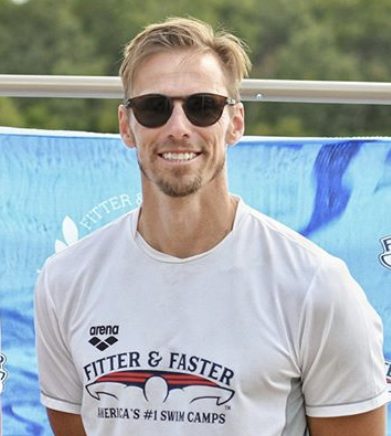
Roland Schoeman
Four-Time Olympian Roland Schoeman is a sprint freestyle and butterfly specialist who's passion for swimming fast is only matched by his passion for imparting his knowledge on others! He has several Olympic medals to his name due to his patience in trusting the process and his focus on doing the little things right. Sign up your swimmer to learn his tips and tricks for being more explosive at this camp! (Photo Credit: Steven Lippman)
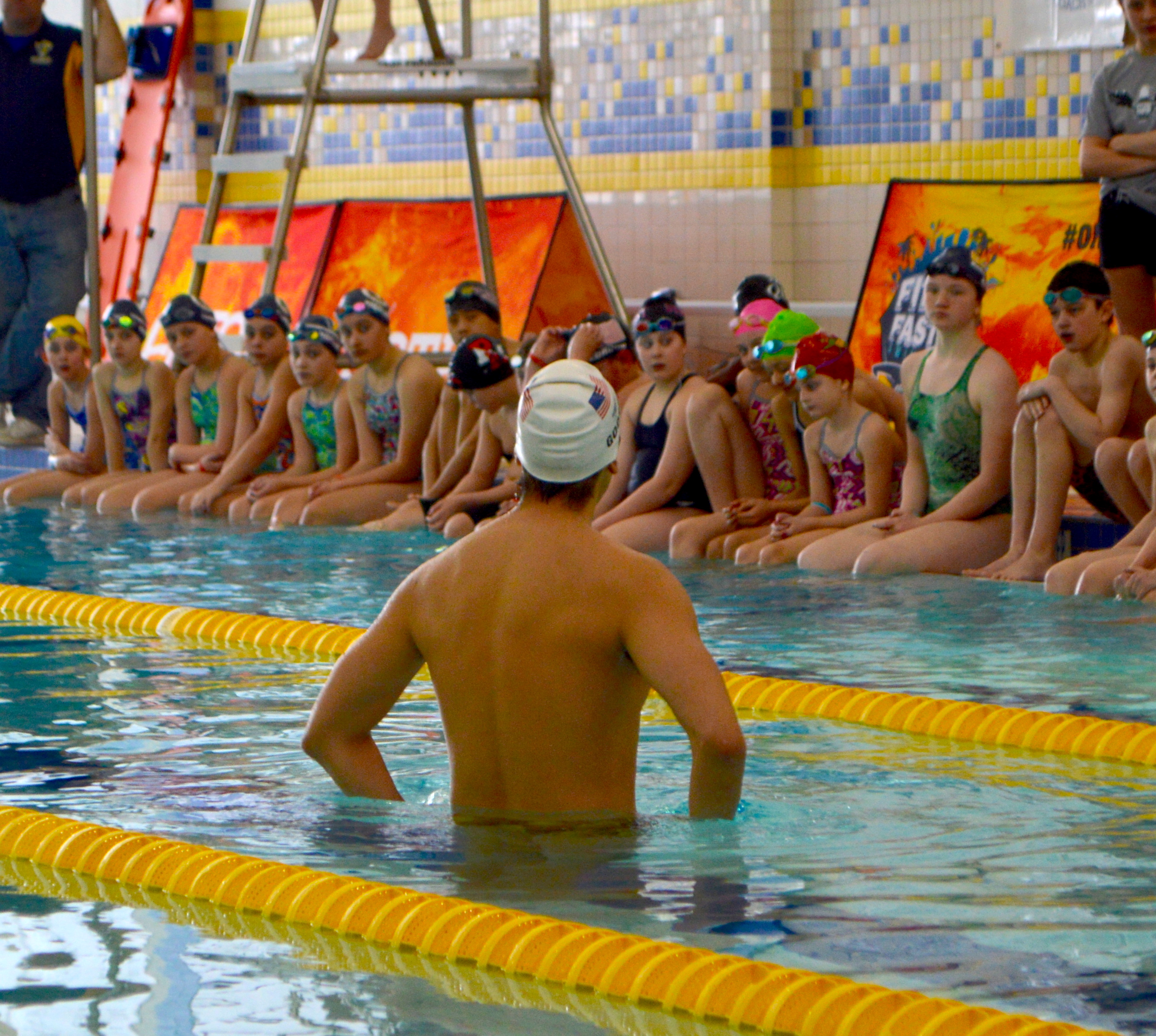
Elite Clinician
Fitter and Faster clinicians are Olympians and National Team members who have achieved at the highest level of the sport of swimming... and who have the unique skill to teach what they know from a technical perspective to swimmers of all ages and abilities.
Inquisitive, Educated Swimmers are Faster Swimmers! Sign up today!


